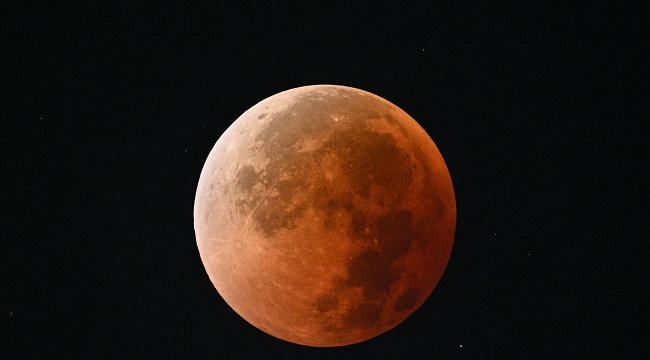Stargazers enjoyed a “Blood Moon” Sunday night during a total lunar eclipse visible across Asia and swathes of Europe and Africa.
The total lunar eclipse lasted from 1730 GMT to 1852 GMT.
Stargazers in Europe and Africa also got a brief chance to see a partial eclipse just as the Moon rose during the early evening, but the Americas missed out.
The Moon appears red during lunar eclipses because the only sunlight reaching it is “reflected and scattered through the Earth’s atmosphere”, said Ryan Milligan, an astrophysicist at Queen’s University Belfast, Northern Ireland.
Blue wavelengths of light are shorter than red ones, so are more easily dispersed as they travel through Earth’s atmosphere, he told AFP.
“That’s what gives the Moon its red, bloody colour.”
While special glasses or pinhole projectors are needed to safely observe solar eclipses, all that is required to see a lunar eclipse is clear weather — and being in the right spot.
The last total lunar eclipse was in March this year, while the one before that was in 2022.
A rare total solar eclipse, when the Moon blocks out the light from the Sun, will be visible in a sliver of Europe on August 12, 2026.
Next year’s totality — the first in mainland Europe since 2006 — will be visible only in Spain and Iceland, though other countries will be able to see a significant partial eclipse.

